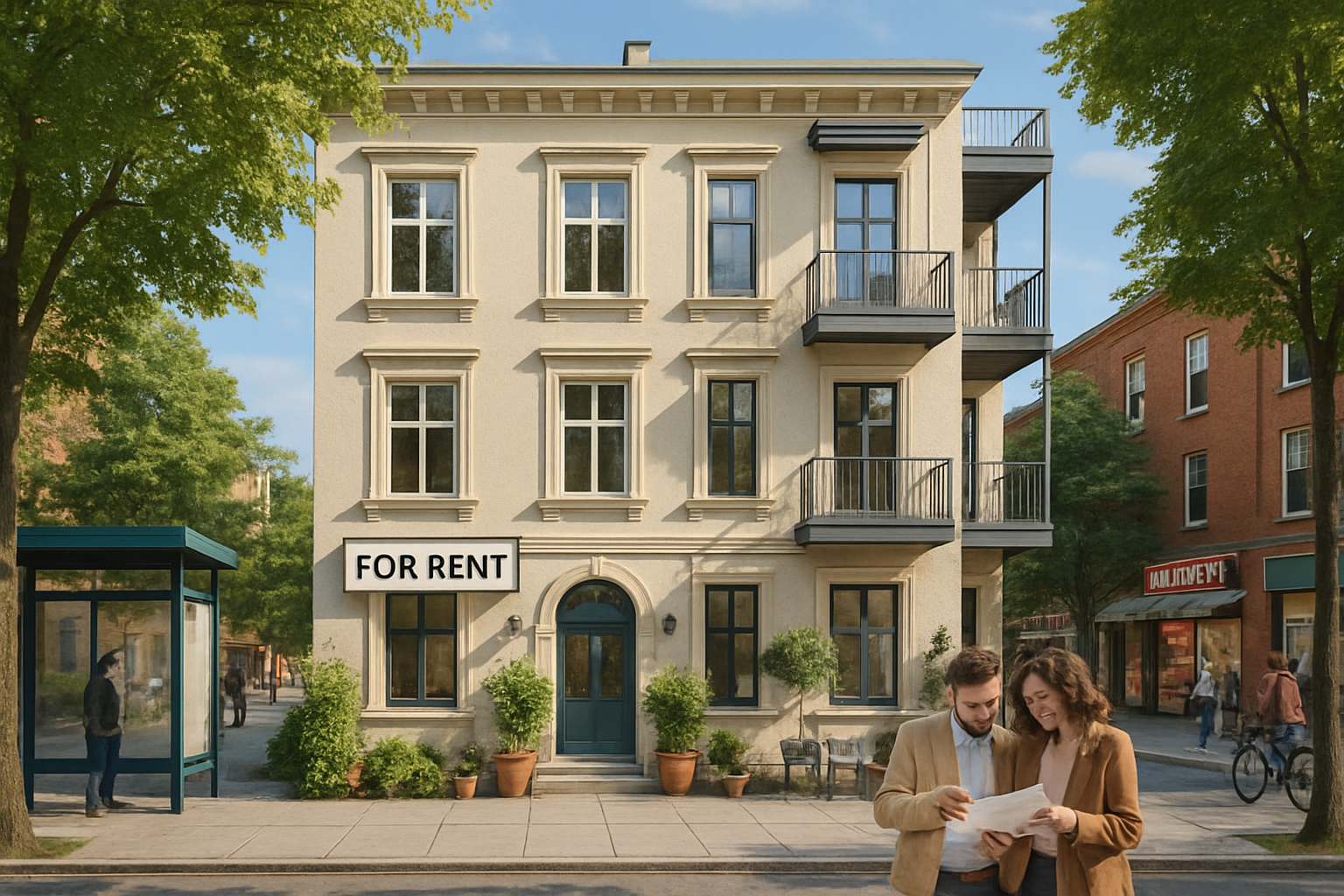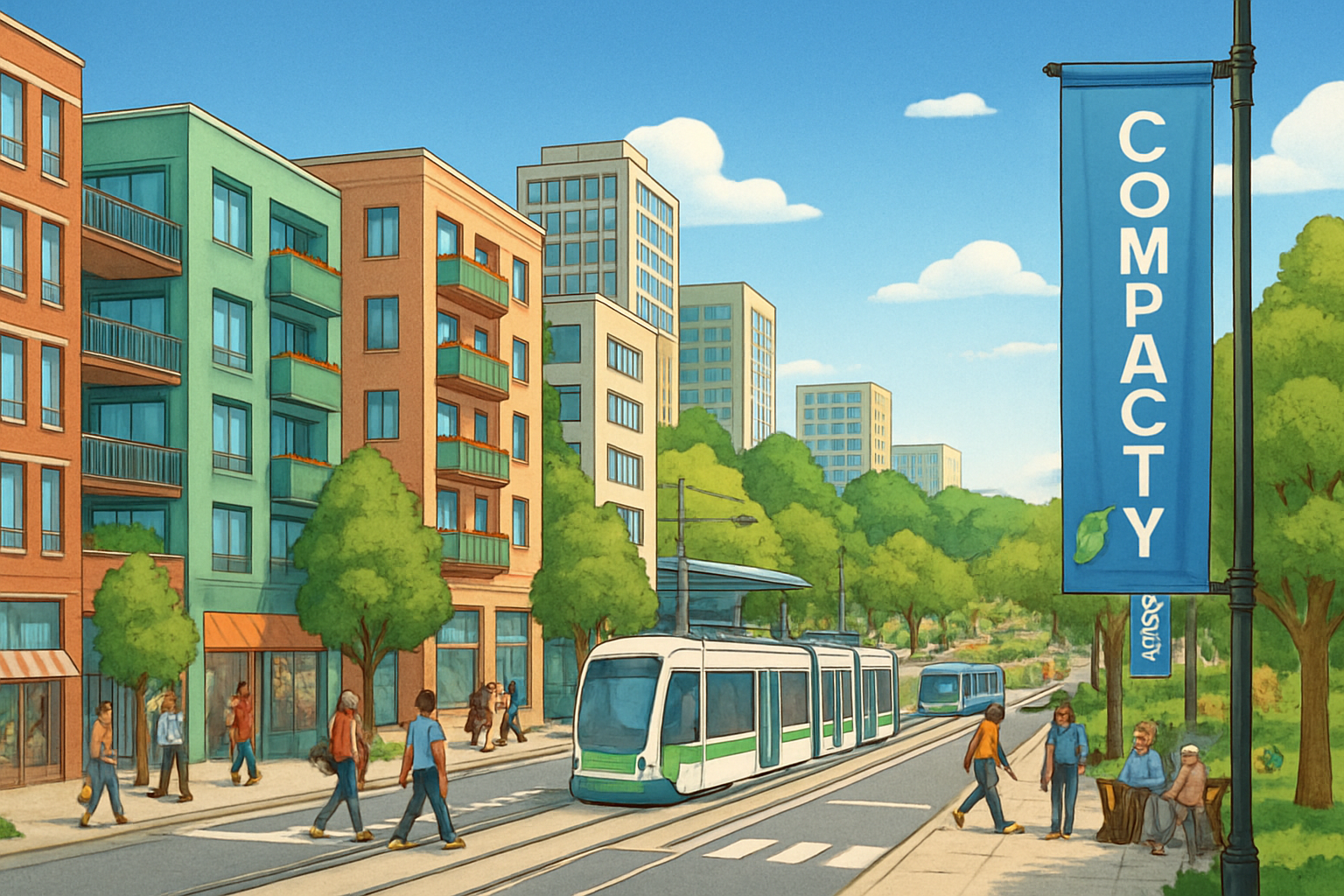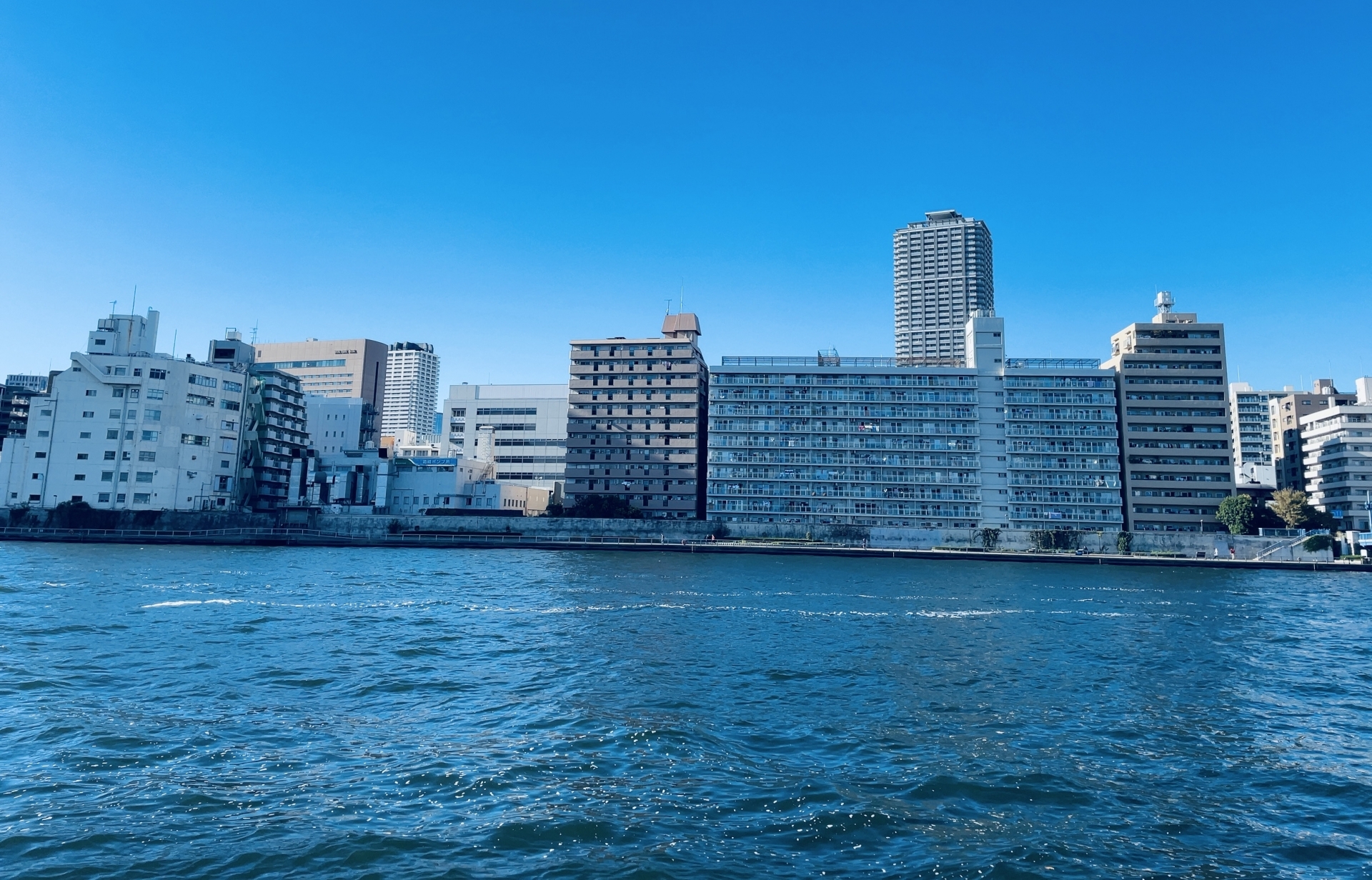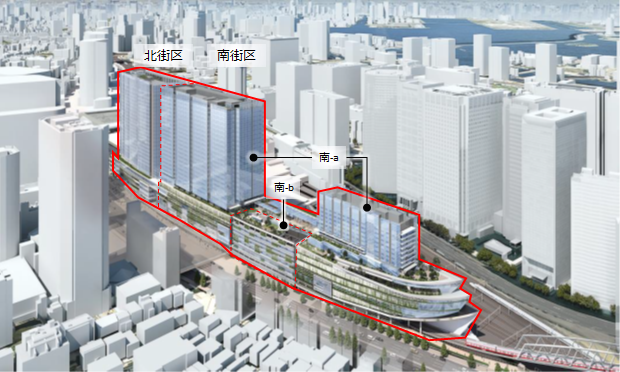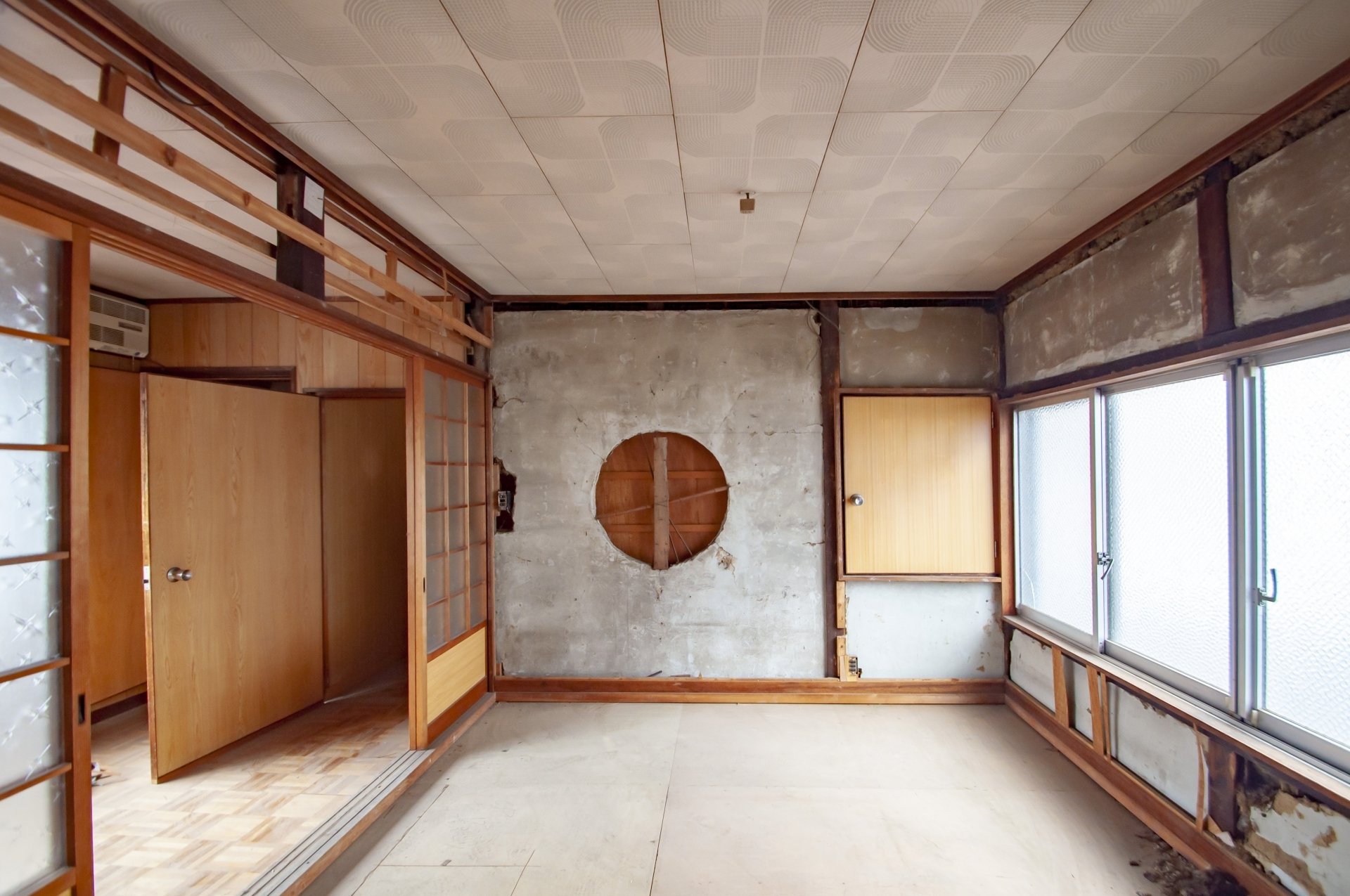As a leading metropolitan city in the Tokyo metropolitan area, Yokohama has attractive market characteristics for investment real estate. It offers a stable investment environment due to its excellent accessibility from central Tokyo, diverse area characteristics, and ongoing redevelopment projects.
Of particular note in Yokohama's real estate investment market is its convenient accessibility: as a transportation hub with a concentration of JR lines, private railways, and municipal subways, it is a hub for commuting to work, school, and sightseeing. In addition, active redevelopment projects are underway, including the Minato Mirai district, which is expected to enhance the value of the area. Another advantage of investing in the area is its attractiveness as an international city with a long history since the opening of the port.
According to the Yokohama Real Estate Market Report 2024, office vacancy rates are improving in some areas and rents are gradually recovering. As for residential real estate, demand for studio apartments, especially targeting single households, is strong, and yields remain slightly higher than in the 23 wards of Tokyo.
When considering investment real estate, it is important to assess the characteristics of each area and its potential for future development. This article provides an analysis of suitable investment areas in Yokohama City and details key points for selecting properties that will not fail.
Latest Trends in the Yokohama Real Estate Market
Current Status of Land Prices, Rents, and Yields
The real estate market in Yokohama City shows different characteristics and trends depending on the area. According to the "Land Price Levels, Rents, and Yields Trend Report" published by the City of Yokohama, the situation in major business districts is as follows
Office Vacancy Rate: (% )
- Yokohama Station West Exit/Kita West Exit District: 3.63% (slightly down from 3.75% in the previous survey)
- Kannai District: 3.71% (stable below the 5% supply-demand equilibrium point)
- Shin-Yokohama Station North Exit District: 8.49% (rising due to large-scale cancellations)
- Minato Mirai 21 Central District: over 10% (impact of large new supply)
Rent trends
- Yokohama Station area: Flat or moderate increase
- Kannai area: generally flat
- Shin-Yokohama Station North Exit: flat for the time being
- Minatomirai: flat with some weakness
Investment Yields: Transaction yields in Yokohama are generally declining, reflecting investors' bullish attitude. This is an indication of an improving market and future growth expectations.
Progress of Redevelopment Projects
Several large-scale redevelopment projects are underway in Yokohama City, and these are having a significant impact on real estate values.
Minato Mirai 21 District: The waterfront area is the most active area, with a rush of high-rise buildings, hotels, and commercial facilities. Development is planned to continue after 2026.
Yokohama Station Area: The area surrounding Yokohama Station is being redeveloped with station buildings, commercial facilities, and office buildings in an effort to create a town suitable for a "gateway to an international city. The West Exit area in particular is attracting attention as an area with high investment potential due to stable rental demand from its convenient accessibility.
Kannai and Bashamichi area: Historic buildings and modern facilities coexist in this area, which is developing in terms of both business and tourist functions. The area is characterized by high demand for single occupancy properties due to the concentration of companies.
| Area | Development Characteristics | Investment Suitability | Expected Yield |
|---|---|---|---|
| Minato Mirai 21 | Focus on large-scale new development | High (potential) | 3.5%~4.5 |
| Yokohama Station area | Redevelopment and functional enhancement | High (stability) | 4.0%~5.0 |
| Kannai/Bashamichi | Renewal of existing facilities and integration of tourism | Medium to High | 4.5%~5.5 |
| Shin-Yokohama | Reinforcement of transportation node | Medium | 4.5%~6.0 |
Analysis and Characteristics by Investment Area
Minato Mirai District
The Minato Mirai district is a particularly high-profile investment area in Yokohama. Its investment points are as follows.
Advantages: 1.
- Short-term rental needs can be expected by taking advantage of tourist demand
- Stable demand for high-end rental apartments for high-income earners
- Continuous redevelopment of the area is expected to increase property values in the future
- Solid business demand due to the concentration of corporate offices
Cautions
- Initial investment costs tend to be high (requires careful financial planning)
- There is a risk of a temporary rise in vacancy rates due to an increase in new supply
- Yields on some properties may decline due to excessive price hikes
Yokohama Station Area
The area around Yokohama Station is regarded as an area where stable rental demand can be expected.
Advantages: 1.
- Concentration of JR, private railways, subways, etc., providing good access to the city center
- Properties near the station have low vacancy risk and can be expected to generate stable income.
- Demand for single occupancy properties is strong due to the concentration of commercial facilities and offices.
- Low vacancy rate and stable rent levels in the area as a whole
Cautions
- Due to high competition, it is important to differentiate properties in terms of location and facilities.
- Temporary changes in the surrounding environment due to redevelopment require attention
- It is important to plan for income and expenditure in consideration of future large-scale repair costs for older properties
Kannai/Bashamichi Area
The Kannai/Bashamichi area is both an office district and a tourist attraction.
Advantages: 1.
- High demand for single occupancy properties for businessmen due to the concentration of companies
- Easy access to tourist attractions, making it possible to develop short-term rentals for tourists
- Attractive historical architecture and streetscape create demand from a specific segment of the population
- Property prices are slightly lower than Yokohama Station and Minato Mirai
Points to note
- There is a large disparity in rent depending on the location within the area.
- Many properties are older, so renovation costs need to be considered
- Land prices are rising, so careful judgment is required when selecting a property
Kanazawa Ward, Hakkeijima Area
The Kanazawa Ward and Hakkeijima area, located somewhat on the outskirts of Yokohama City, has different investment characteristics.
Advantages:.
- Property prices are more affordable than other areas, making it easy to keep initial investment low
- Stable demand for properties for families who prefer a natural environment
- Demand is also strong due to proximity to tourist attractions (e.g., Hakkeijima Sea Paradise)
- Yields can be relatively high
Cautions
- Less appealing to those seeking convenience compared to central Tokyo
- Future asset value appreciation may not be as high as in central Tokyo
- Even within an area, there are differences in value depending on the distance from the station and the surrounding environment.
Seven points for selecting a property to avoid failure
1) Determine the characteristics of the area and its future potential
The first step in selecting an investment property is to determine the characteristics of the area and its future potential.
Checkpoints: 1.
- Demographics (is the population increasing? Is there a high percentage of single-person households?)
- Transportation accessibility (access time to major stations, number of transfers)
- Redevelopment plans (urban plans and major projects for the next 5-10 years)
- Convenience of living facilities (commercial facilities, medical facilities, public facilities, etc.)
- Disaster risk (check the hazard map for flood zones, etc.)
In Yokohama, it is particularly important to confirm redevelopment trends in the Minato Mirai district and Yokohama Station area. This is because these redevelopments are likely to increase the value of surrounding properties.
2) Analyze the balance between supply and demand for properties
The key to a successful investment is to accurately understand the balance between supply and demand.
Checkpoints:.
- Vacancy rate in the area (less than 5% is desirable)
- New supply plan (possibility of increased competition if there is a large supply)
- Trends in rental rates (whether they are rising or falling)
- Number and quality of competing properties (are there any points of differentiation)
Clarification of tenant targets
When selecting a property, it is important to clarify the expected tenant base.
Checkpoints: 1.
- For singles: close to station, compact design, emphasis on security
- For families: appropriate size, access to educational facilities, quiet environment
- Corporate demand: Convenient transportation, surrounding office conditions, commercial facilities
- For foreigners: multilingual support, international environment, airport access
Demand for single-person properties is particularly high in Yokohama City. Although the working-age population (15-64) of Yokohama City is expected to decline in the future, the number of single-person households is on the rise, and rental demand is expected to remain stable.
4) Yield Calculation and Income/Expenditure Simulation
It is essential to properly perform yield calculations and income/expense simulations as the basis for investment decisions.
Surface Yield and Real Yield: (1 )
| Item | Calculation Method | Yokohama City Average |
|---|---|---|
| Surface Yield | Annual rental income / Property price x 100 | 4% to 6.5 |
| Real Yield | (Annual rental income - expenses) ÷ property price × 100 | 3.0%~4.5 |
Key Points for Income/Expenses Simulation: 1.
- Estimate the vacancy rate appropriately (refer to the average vacancy rate in the area).
- Allocate expenses such as management and repair costs (about 20-30% of annual income)
- Tax costs such as property tax and city planning tax
- Provision for future large-scale repair costs
Yields for studio apartments in Yokohama City vary by location, but are generally around 4% to 6.5% for surface yields and 3.0% to 4.5% for real yields. Properties with significantly higher yields (7% or more) may have problems with the location or building condition, so caution is required .
5. thorough due diligence
Before purchasing an investment property, a thorough due diligence (detailed investigation) is an important step to prevent mistakes.
Checkpoints:.
- Legal survey of the property (ownership, mortgage, boundary confirmation, etc.)
- Physical survey of the building (building diagnosis, facility condition, repair history, etc.)
- Confirmation of lease agreement (rent trends, tenant demographics, delinquent status, etc.)
- Surrounding environment survey (presence or absence of objectionable facilities, forecast of future environmental changes, etc.)
Especially in the case of an existing property, it is recommended to request an expert to investigate the building's earthquake resistance and aging facilities. This is because hidden defects may appear on the surface as large repair costs later on, even if the property looks fine on the surface. 6.
Determine the points of differentiation of the property
In order to secure a stable occupancy rate in Yokohama, where there are many competing properties, it is important to identify the differentiating factors of the property.
Differentiation factors: 1.
- Location advantage (minutes walk from station, good visibility, etc.)
- Amenity of facilities (delivery boxes, auto-locks, security cameras, etc.)
- Efficiency of the floor plan (lean layout, storage space, etc.)
- Interior quality (design, texture of materials, etc.)
- IT support (high-speed Internet, smart locks, etc.)
In properties for singles in Yokohama, "security," "IT environment," and "storage space" tend to be particularly important. By providing facilities that meet these needs, you can differentiate your property from competing properties. 7.
7. selection of a reliable management company
A reliable management company is essential to the long-term success of a real estate investment.
Selection criteria: 1.
- Track record and knowledge of management in Yokohama
- Promptness in handling tenants and complaints
- Leasing ability when vacancies occur
- Repair and maintenance system
- Quality and frequency of reporting
Especially in a highly competitive market such as Yokohama City, choosing a management company that is well versed in local characteristics will provide advantages in terms of maintaining occupancy rates and setting appropriate rents.
Risk Avoidance Measures Learned from Failure Cases
Failure due to insufficient location research
Example: Purchasing a property in a prime location near the redevelopment area in the Minato Mirai district, but in reality, the large-scale construction work caused long-term noise problems, making it difficult to secure tenants.
Workaround:.
- Make sure to conduct multiple site visits at different times on weekdays and holidays.
- Confirm details of the surrounding development plans with the city's urban planning department or a real estate agency.
- If there is a construction plan, accurately ascertain the completion date and the scope of impact
Failure due to poor income/expense planning
Example: A case in which a property was purchased based solely on its high surface yield, but in reality the property was old, had high repair and maintenance costs, and the vacancy period was longer than expected, resulting in negative cash flow.
Workaround: 1.
- Make a decision based on the real yield, not just the surface yield.
- Appropriate reserve for repairs based on the age of the building
- Use a higher vacancy rate than the average for the area in the simulation.
- Prepare an income/expenditure plan for at least 5 years and verify cash flow.
Failure due to misjudgment of tenant needs
Example: Purchased a spacious family-oriented property, but due to a mismatch with the characteristics of an area with many singles, it was difficult to secure tenants and rents had to be lowered significantly.
Workaround:.
- Research the area's household composition and demand trends in advance.
- Continuously check the rental availability in the area.
- Verify consistency between property type and area characteristics
- Obtain and compare demand forecasts from multiple real estate agencies.
Failure due to building quality issues
Example: A tenant purchased an existing property based on its appearance and low price, but after moving in, problems with insulation and soundproofing were discovered, resulting in numerous complaints from tenants. As a result, the tenants had to move out early and their reputation was damaged.
Workaround: 1.
- Ask an expert to diagnose the building before purchasing.
- Confirm earthquake resistance standards (new earthquake resistance standards or later are preferable).
- Estimate the renewal status of facilities and future maintenance costs.
- Check the condition of other rooms in the same building as much as possible.
Failure by Mistaken Selection of Management Company
Example: A case in which a management company was selected based solely on the low management fee, but the company's reputation was damaged due to inadequate tenant service, resulting in an increase in vacancy rates and a decrease in rents.
Workaround: The client chose a management company based on not only the low management fee, but also on their services.
- Compare services in detail, not just management fees.
- Visit existing managed properties if possible.
- Confirm the specific system and track record of tenant relations
- Provide opportunities to hear evaluations from multiple owners.
Summary: Successful Investment Strategies in Yokohama
The following points are particularly important for successful real estate investment in Yokohama.
-
Understand the characteristics of the area Understand the characteristics and future potential of each area in Yokohama , and select an area that meets your investment objectives.
-
Analyze the balance between supply and demand Select areas and properties where stable demand can be expected, based on current vacancy rates and future supply plans
-
Clarify target tenants and select and renovate properties that meet their needs.
-
Appropriate income/expense planning Make investment decisions based not only on surface yields, but also on real yields and long-term cash flow
-
Thorough due diligence Conduct a detailed investigation of the property from legal , physical, and economic perspectives to discover hidden risks
-
Differentiation strategy Clarify points of differentiation from competing properties and maintain stable occupancy rates and reasonable rents
-
Establish a management system Maintain and improve long-term asset value by working with a highly reliable management company that is familiar with the local characteristics
The real estate investment market in Yokohama is an attractive investment destination if the right properties are selected, as yields are slightly higher than in the 23 wards of Tokyo and redevelopment can be expected to increase values in the future. In particular, there are currently many redevelopment plans underway for 2024 and beyond, drawing attention to the future potential of the market.
In order to avoid mistakes and obtain stable income, it is important to make a comprehensive decision based on the points introduced in this article, rather than making a decision based solely on "cheapness" or "good looks. In addition, real estate investment should only be undertaken from a long-term perspective, and an investment strategy that emphasizes steady cash flow, rather than aiming for short-term gains in value, is the path to success.
Frequently Asked Questions
Q1: What are the best areas in Yokohama for investment?
A: The best area to invest depends on your investment objectives. We recommend the Yokohama Station area for stable income, the Minatomirai area for future asset value appreciation, and the Kannai and Bashamichi areas for a high yield with a low initial investment. In both areas, properties near stations tend to be in high demand and have low vacancy risk.
Q2: Which is more advantageous in Yokohama, condominium unit ownership or a single apartment building?
A: Considering the initial investment amount and the time and effort required to manage the property, condominium unit ownership (especially studio apartments near stations) is an easier investment to start with in Yokohama. Surface yields are around 4-5% for condominiums and 5-7% for single-family homes, but single-family homes require experience in terms of management effort and risk diversification. Beginning investors generally start with condominiums and move up to single-family homes after gaining experience.
Q3: Which do you recommend as an investment, existing properties or new properties in Yokohama?
A: Both have their merits and demerits. Newly constructed properties have lower initial repair costs and are easier to secure tenants, but are more expensive and offer lower yields. Used properties tend to be relatively inexpensive and have higher yields, but it is important to assess repair costs and vacancy risk. If you are a beginner, new buildings are easier to manage, and if you are experienced and have a good eye for properties, used properties with high yields will be suitable for you.
Q4: What are the differences between Yokohama and the 23 wards of Tokyo in terms of condominium investment?
A: The main differences are: 1) property prices (Yokohama tends to be 20-30% cheaper than Tokyo's 23 wards), 2) yields (Yokohama tends to be 0.2-0.5% higher), 3) rent levels (Tokyo's 23 wards are higher), and 4) potential (Yokohama has more room for development through redevelopment). We recommend that you choose according to your investment budget and the factors that are important to you.
Q5: Are there any particular location conditions that require special attention for properties in Yokohama City?
A: In Yokohama City, rental demand tends to be weak, especially in areas with many hills and properties that are more than a 15-minute walk from a station. In addition, some areas on the waterfront are at risk of tsunami and storm surge, and some hilly areas are at risk of landslides, so it is essential to check hazard maps. Furthermore, properties located near factories or railroad tracks may lose competitiveness due to noise issues. It is important to select a location that takes these risk factors into consideration.
Reference information
- Yokohama City Urban Development Bureau, "Land Price Levels, Rents and Yields Trend Report" (as of April 1, 2024) [Source] City of Yokohama

Daisuke Inazawa
Representative Director of INA&Associates Inc. Based in Osaka, Tokyo, and Kanagawa, he is engaged in real estate sales, leasing, and management. He provides services based on his extensive experience in the real estate industry. Based on the philosophy that “human resources are a company's most important asset,” he places great importance on human resource development. He continues to take on the challenge of creating sustainable corporate value.

.png)


